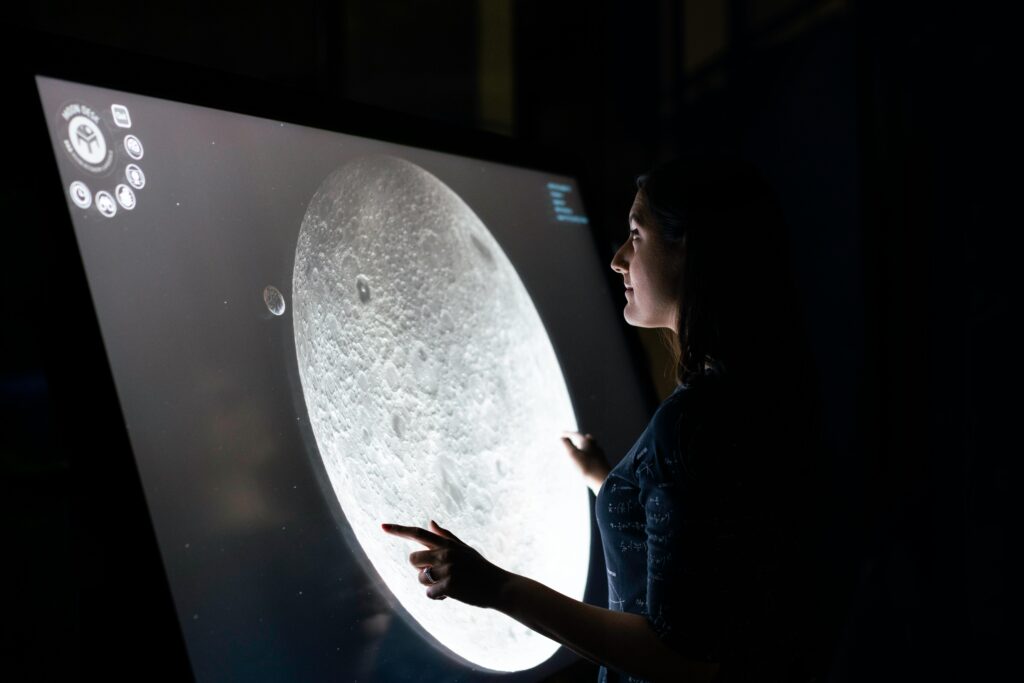Canada is getting ready to make a significant move in deep-space exploration with the development of its first lunar rover. This mission is not just about technology; it represents a new era of international collaboration, scientific discovery, and innovation. By landing a Canadian-built rover on the Moon, the country aims to become a key player in humanity’s next chapter of space exploration.For more information click here.

A Historic First forCanada
Canada has made important contributions to space science, most notably with the Canadarm, a symbol of the nation’s skills in robotics. However, until now, Canada’s involvement in lunar and planetary exploration has mainly been through international missions, rather than operating its own rover. The upcoming lunar rover mission will change that story.
- For the first time, a Canadian-designed rover will land on the lunar surface, making Canada the first country after a few global space powers, such as the United States, Russia, and China, to operate robotic technology on the Moon. This step reflects decades of investment in aerospace engineering and robotics, along with Canada’s growing partnership with NASA and other space agencies.
Partnership with NASA and International Collaboration
The Canadian Space Agency (CSA) is working with NASA’s Artemis Program, which aims to return humans to the Moon by the mid-2020s and establish a sustainable lunar presence. Canada’s lunar rover will help prepare the Moon for future crewed missions and support both exploration and scientific studies.
Through this collaboration, Canada gains access to shared knowledge, data, and technology while contributing its own specialized skills. This international teamwork shows how important it is to work together to face the big challenges of space exploration. Canada’s rover is not just a national triumph; it’s part of a global effort to expand humanity’s presence beyond Earth.
Features of Canada’s Lunar Rover
Although still being developed, the Canadian lunar rover is expected to have several innovative features to handle the Moon’s harsh conditions.
Surviving the Lunar Night
The rover must endure the lunar night, which lasts about 14 Earth days and brings extreme cold, often dropping to -200°C. Most robotic missions struggle to survive these conditions, but Canada’s design will test new technologies to endure the dark, freezing environment.
Robust Mobility System
The Moon’s terrain is covered with fine, powdery dust known as regolith, along with rocky craters and uneven ground. The rover’s mobility system must enable it to navigate difficult landscapes while keeping its instruments protected.
Scientific Instruments
The rover will carry tools to study the lunar soil, search for water ice, and monitor environmental conditions. Knowing the distribution of water on the Moon is essential because it could provide fuel and life support for future human explorers.

AI and Autonomy
Communication delays between Earth and the Moon make remote control difficult. To tackle this issue, the rover will likely use artificial intelligence and semi-autonomous systems to navigate and perform tasks on its own.
Scientific Goals of the Mission
The Canadian lunar rover will not only test technology but also contribute valuable science to humanity’s understanding of the Moon. Some of its scientific goals may include:
Searching for Water Ice:
Finding and analyzing water ice at the lunar poles could greatly impact space exploration. Water can be split into hydrogen and oxygen, creating rocket fuel and breathable air for astronauts.
Studying Lunar Geology
Learning about the composition and history of lunar rocks and regolith helps scientists understand more about the early solar system.
Testing New Technologies:
In addition to science, the rover will serve as a testing ground for future exploration systems, from power management to robotics.
Preparing for Artemis and Beyond
The Artemis missions will set the stage for human settlement on the Moon, and Canada’s rover is a crucial part of that drive. Before astronauts can live and work on the Moon, robotic missions must find locations, assess risks, and identify resources.
The Canadian rover will help determine where future lunar bases might be built and how materials like water ice can be collected. This preparation is vital not only for Artemis but also for long-term plans to use the Moon as a gateway to Mars and beyond.
Canada’s Role in the Future of Space Exploration
This rover represents more than a technological success; it shows Canada’s commitment to being an important part of space exploration. By demonstrating robotics and AI on the Moon, Canada strengthens its position as a leader in key areas of space technology.
- Moreover, this mission inspires the next generation of scientists, engineers, and innovators. Students and young professionals across Canada can now see their country not just contributing to international missions but also leading its own ambitious projects.
Challenges Ahead
While the mission is exciting, it comes with risks. Lunar exploration is notoriously tough, and many missions from established space powers have failed. The harsh conditions, communication challenges, and technical complexities all pose potential hurdles.
Additionally, the cost of such missions is significant. Canada must balance its investment in space exploration with other national priorities. However, the possible benefits—scientific discovery, technological advancement, and international recognition—make the effort worthwhile.

Looking Toward the Future
Canada’s first lunar rover is just the start. The success of this mission could lead to more advanced rovers, lunar construction technologies, and even Canadian astronauts walking on the Moon. With NASA already planning to send international partners to the lunar surface, it is possible that a Canadian astronaut will set foot on the Moon within the next ten years.
Canada’s expertise in robotics could extend to Mars exploration, asteroid mining, and building space-based infrastructure. The rover is not just a vehicle for lunar exploration; it is a stepping stone to a future where Canada continues to influence the path of human spaceflight.
Conclusion
The launch of Canada’s first lunar rover is a key moment in the nation’s space history. It brings together robotics, international collaboration, and scientific curiosity in a mission that will expand the limits of what Canadian technology can achieve.
As the rover travels to the Moon, it carries not only instruments and experiments but also the hopes of a nation eager to take part in humanity’s next great adventure. By exploring the lunar surface, Canada is not just focused on the Moon; it is looking toward the future of space exploration itself.For more details click this wikipedia.
